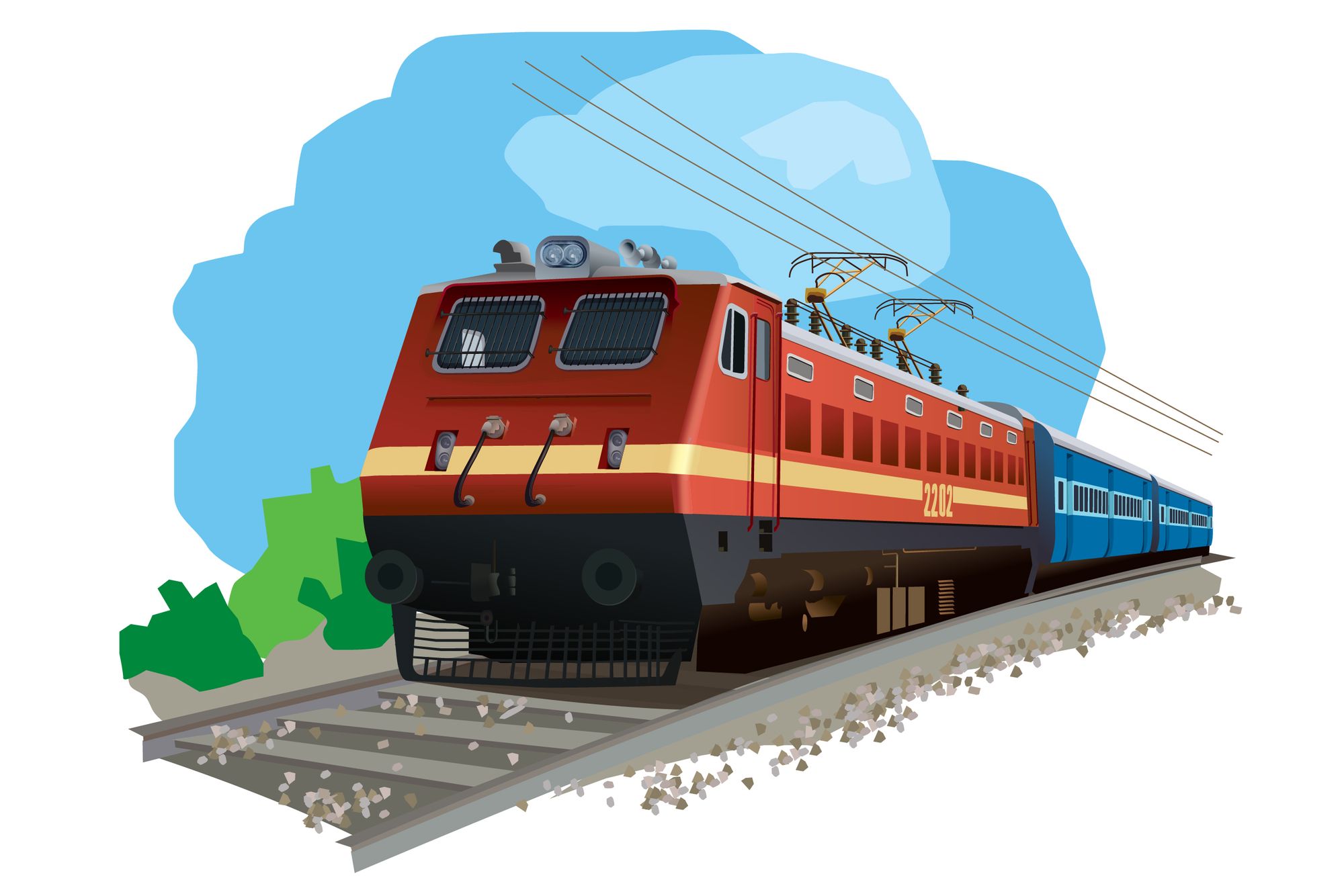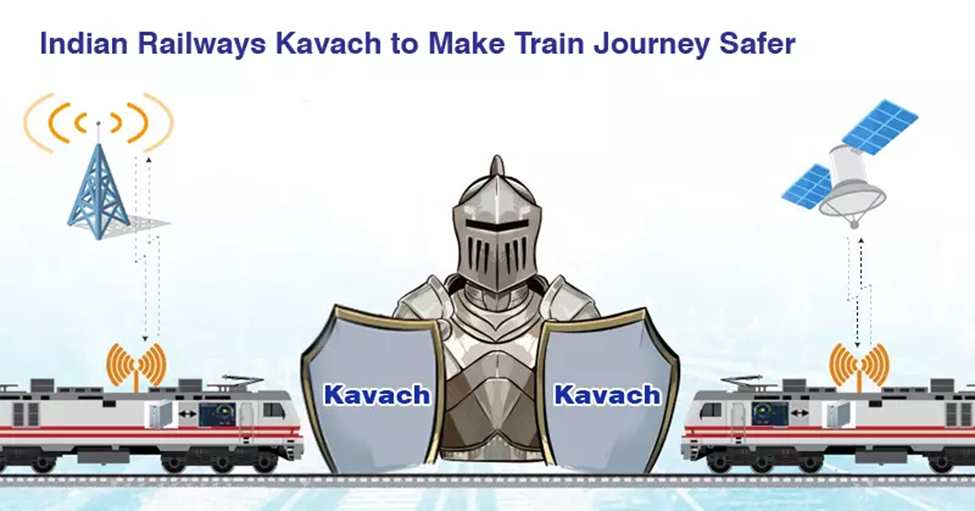Context:
The safety of Indian Railways has come under scrutiny following a series of recent accidents. One such incident occurred on October 11, 2024, when a passenger train collided with a stationary goods train in Kavaraipettai near Chennai. The collision was severe, causing 13 bogies to overturn and one to catch fire. Fortunately, there were no casualties, though several people were injured. However, this incident, along with other recent railway accidents, has highlighted the urgent need for systemic reforms in railway safety.
Background: The State of Indian Railways:
- India has the fourth-largest rail network in the world, covering 68,043 km and catering to nearly 3.5 billion passengers annually. Railways play an essential role in India's economy, transporting people and goods across vast distances.
- However, frequent accidents due to derailments, collisions, signal failures, and level crossing mishaps have raised concerns over safety measures in place.
- According to the National Crime Records Bureau (NCRB), between 2010 and 2021, an average of 23,000 people lost their lives each year in railway-related accidents.
- Railway accidents in India occur primarily due to five key factors: derailments, collisions, signal failures, level crossing accidents, and overcrowding or overspeeding.
Challenges in Ensuring Railway Safety:
1. Technical Glitches and System Failures: The recent Balasore accident in Odisha was linked to an electronic interlocking error, revealing the prevalence of technological mishaps. These glitches often lead to catastrophic outcomes like faulty signaling or track misalignments.
2. Funding Constraints: The Indian Railways faces financial hurdles, with a slow capex growth, reliance on budget allocations, and declining revenues, all of which impact safety upgrades. The Rashtriya Rail Sanraksha Kosh (RRSK), set up in 2017 with a ₹1 trillion corpus for safety improvements, has faced implementation challenges, with safety funds often diverted for non-priority tasks.
3. Inadequate Maintenance and Inspections: The Comptroller and Auditor General (CAG) audit reports highlight shortfalls in track inspections, timely renewals, and maintenance activities. For example, the derailment of the Utkal Express could have been avoided with proper track maintenance. This lack of vigilance puts the entire system at risk of further accidents.
4. Congestion and Overcrowding: High-utilization routes often report over 100% network capacity, increasing the risk of accidents. The sheer volume of passengers on many trains creates hazardous conditions, particularly during emergencies. Safety protocols become harder to enforce in such congested environments.
5. Human Error: Mistakes such as incorrect signal setting, improper point shunting, and overspeeding contribute significantly to train accidents. While technology like Kavach is expected to address some of these issues, human vigilance remains a critical factor in ensuring rail safety.
6. Slow Capacity Expansion: Post-COVID-19, there has been a 30% rise in consequential train accidents, attributed to higher passenger and freight traffic. Infrastructure expansion has been slow to keep up with this increased demand, leading to accidents like the Bahanaga Bazar crash in Odisha.
Government Initiatives for Railway Safety:
To address these safety concerns, several initiatives have been launched:
1. Kavach System: Kavach is an indigenously developed automatic train protection system designed to prevent collisions. As of February 2024, it has been deployed on 1,465 route kilometers and 139 locomotives on the South Central Railway. However, it still covers only 1% of the Indian railway network, with full implementation expected to take up to a decade.
2. Rashtriya Rail Sanraksha Kosh (RRSK): This safety fund was set up to replace and upgrade critical safety assets over a five-year period starting in 2017. It aims to address safety-related investments in track renewals, signaling systems, and infrastructure upgrades.
3. Mission Zero Accident: This mission consists of two sub-missions: eliminating unmanned level crossings and deploying Train Collision Avoidance Systems (TCAS). The goal is to equip the entire high-density network with TCAS, reducing the risk of head-on collisions.
4. Infrastructure Upgrades: The government has been making significant investments in modernizing railway infrastructure, including electrification of lines and the introduction of high-speed trains like the Vande Bharat Express. By November 2023, 3,000 km of track renewals had been completed, meeting 66% of the annual target.
|
Technological Interventions: The Role of Kavach ‘Kavach’, an indigenous Automatic Train Protection (ATP) system, has been hailed as a solution to prevent accidents caused by human error. In the Kavaraipettai incident, where a train mistakenly entered the loop line and collided with a goods train, ‘Kavach’ could have automatically slowed down the train and avoided the crash.
However, its implementation has been slow. As of 2024, ‘Kavach’ has only been deployed on 1,465 km of the nearly 68,000 km of the railway network. Given the scale of Indian Railways, deploying this system nationwide remains a challenge. The estimated investment required is only 2% of Indian Railways' annual capital expenditure, but the timeline for its full implementation is likely to take a decade. |
Challenges to Railway Safety:
Indian Railways faces multiple challenges in ensuring the safety of its network:
1. Funding Constraints: The dependence on budgetary allocations for capital expenditure (capex) has slowed down the modernization of safety protocols. Although initiatives like the Rashtriya Rail Sanraksha Kosh (RRSK) were established with a corpus of ₹1 trillion for safety upgrades, the utilization of these funds has been inconsistent.
2. Staff Shortages and Working Conditions: There is a shortage of nearly 18,799 loco pilots across Indian Railways. In addition, reports of poor working conditions, long hours, and unhygienic rest facilities for loco pilots have further exacerbated the risk of human errors, which contribute to a significant number of accidents.
3. Maintenance and Inspections: A lack of adequate maintenance and timely inspections has led to infrastructure degradation, including faulty tracks and signaling systems. Audits by the Comptroller and Auditor General (CAG) have revealed a shortfall in track renewal, track inspection, and acceptance of inquiry reports after accidents.
4. Technical Glitches: The Balasore train crash in Odisha was caused by a faulty interlocking system. Such glitches, which may seem minor, can have catastrophic consequences if left unaddressed.
Conclusion:
The safety of Indian Railways is of paramount importance, given its vast scale and critical role in the country’s economy and daily life. To ensure the security of millions of passengers, a comprehensive approach is necessary. Thorough investigations into accidents, better track maintenance, and consistent funding for upgrades like track renewals and signaling systems are critical. Accelerating the rollout of the ‘Kavach’ system to minimize human error and establishing an independent Railway Safety Authority for oversight will further enhance safety. By prioritizing these reforms, Indian Railways can protect millions of passengers, prevent accidents, and restore public confidence in its safety standards.
|
Probable questions for UPSC Mains exam: Discuss the recent safety incidents involving Indian Railways and analyze the underlying causes of these accidents. What systemic reforms are necessary to enhance railway safety? |








